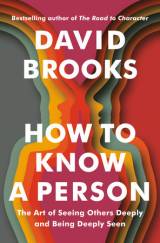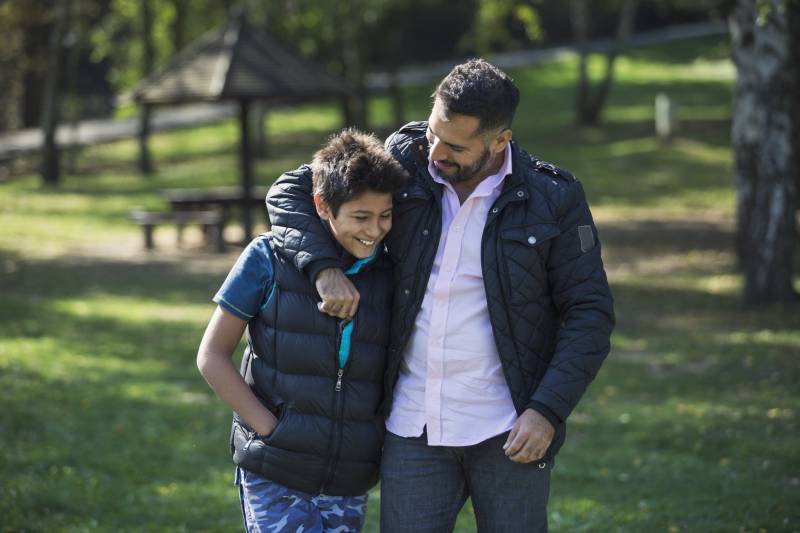In his new book, How to Know a Person: The Art of Seeing Others Deeply and Being Deeply Seen, author and New York Times columnist David Brooks writes about a period of singular connection between him and his young son. The boy was just over a year old and would wake every morning at 4 a.m. Rather than shush the boy back to bed, Brooks would join him on the floor for several hours and play. “I’m naturally immature,” Brooks told me, “And I loved to play.” He recalls those extended, wordless sessions with his son as a time of profound tenderness and understanding, when each knew the other more completely than they did any other person. It was made possible by the natural bonding that comes with simple play.
 Echoing the late British author Iris Murdoch, Brooks believes that looking closely at another person and striving to understand their place in the world, as he and his son did decades ago, is “the essential moral act” — a posture towards others that determines the kind of person we become. But understanding another is inherently difficult; egotism, fear, a distorted faith in our own perspective and other interior impediments get in the way. Society’s “creeping dehumanization” and narrow focus on academic merit over character development, especially among the young, also have conspired to corrode moral awareness. Few know how to escape the prisons of their minds, and the social skills that would help us understand each other — how to converse, ask questions, disagree with integrity, and consider another’s perspective — are rarely taught in schools. Brooks wrote How to Know a Person to help us develop these vital skills, many of them rusty from underuse or eroded by coarse social norms.
Echoing the late British author Iris Murdoch, Brooks believes that looking closely at another person and striving to understand their place in the world, as he and his son did decades ago, is “the essential moral act” — a posture towards others that determines the kind of person we become. But understanding another is inherently difficult; egotism, fear, a distorted faith in our own perspective and other interior impediments get in the way. Society’s “creeping dehumanization” and narrow focus on academic merit over character development, especially among the young, also have conspired to corrode moral awareness. Few know how to escape the prisons of their minds, and the social skills that would help us understand each other — how to converse, ask questions, disagree with integrity, and consider another’s perspective — are rarely taught in schools. Brooks wrote How to Know a Person to help us develop these vital skills, many of them rusty from underuse or eroded by coarse social norms.
The challenge is particularly important for loving parents who crave lasting connection with their children. Brooks explained how the work involved in understanding children varies by their age and life circumstance. “The first thing to shine on a young child is a gaze, the gaze of love, the gaze that says, ‘I recognize you, I see you’,” he told me. Playing side-by-side, without an agenda or purpose, also generates organic trust and understanding. While easy in theory, parents (and everyone else) are assaulted by distractions, especially from their phones. Brooks advises regarding attention as a switch that’s either off or on; when caring for a child, shut down TikTok or Instagram and fully engage. Striving to become a “loud listener” who responds to a child’s stories and experiences with vocal curiosity also builds understanding. Brooks learned this himself by observing how Oprah Winfrey leans in, gapes, affirms and manifestly attends to those she interviews.
Parents also would be wise to consider their child’s phase of life. This is especially important with teenagers, who typically have moved beyond what Brooks calls the early “imperial task,” in which they discover their own agency, and have advanced to the “interpersonal task,” where they gain insight into their psychology — along with an acute and occasionally maddening longing to be liked by their peers. Try to see the world from their perspective, he advises. Invite enigmatic teenagers to tell stories about what they’re experiencing. And as they do with fellow adults, parents might deploy conversational techniques that spur openness: Ask questions about the child’s unique interests, allow for lulls in the back-and-forth, and repeat back what the child said in your own words. Keep in mind that what often drives division between generations is the suspicion among the young that they’re not respected.
Personality types, of both parents and kids, also affect communication. But few adults are aware of the five big personality types — extroverted, conscientious, neurotic, agreeable, open — or grasp how these natures might clash. The demanding father who is short on agreeableness, for example, might come off to his neurotic, exquisitely sensitive son as loud and critical. A richer appreciation of these differing personality types can help parents moderate their communication to fit the child.


